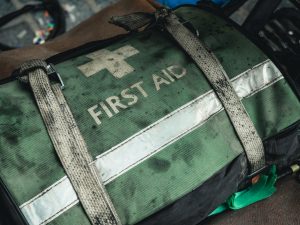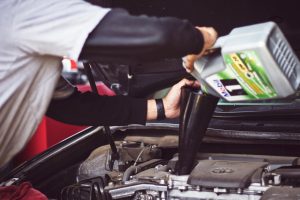Grenada’s hurricane season, which generally runs from June through November, is fast approaching. While there’s no guarantees there will be any hurricanes from one year to the next, the threat of tropical storms is enough for motorists on the island to think carefully about how to protect themselves and their vehicles across the summer.
Whether you’re new to the island, or have previously succumbed to storm damage, here are some helpful tips on how to protect your car, van, or other vehicle before June arrives and the potential for extreme weather rears its head.
Always stay prepared
One of the best things you can do ahead of any potential weather warnings is to make sure your vehicle is fully stocked and that you have plenty of provisions on board in case you end up stranded inside.
First, always make sure that your vehicle’s tyres and wipers are in full working order, and that you have plenty of oil and water topped up. Do also check your vehicle’s battery level, and that it works as expected.
Next, make sure that you have any essentials you may need in your car in the event of getting trapped or stranded. For example, always account for extra clothing, bottled water, chargers, and torches.

A first aid kit and a powerbank for a smartphone will also be worth keeping with you in case of injury and you need immediate support.
In the event of flooding, it’s also a good idea to take waterproof clothing, footwear, towels, and buckets in case you need to evacuate and dry yourself and the vehicle as quickly as possible. Don’t forget that you might need to keep warm with emergency supplies, too – so, pack some matches or a lighter and blankets, too.
Lastly, don’t forget your jumper cables – just in case there’s a chance you can kickstart your vehicle.
Arrange insurance that covers hurricane damage
Just because your vehicle is insured doesn’t always mean you’re covered for everything you need. Therefore, take a good look at your insurance policy before hurricane season and check if you are protected against natural disasters or ‘acts of god’.
If not, it’s wise to compare other carriers and policies so that you can feel reassured when taking your vehicle on the roads this summer. The last thing you’ll want is to find you’re completely out of money on the back of an accident that wasn’t your fault.
Take photos of your vehicle
In the event that your vehicle is damaged due to extreme weather, you’ll likely need some proof of how it looked before disaster struck.
Try and take photos of your vehicle pre-storm season, ideally time and date stamped, and where possible, with you in the photo. It’s also a good idea to keep essential documentation such as your log book to hand in case your insurance carrier needs to assess proof of ownership.

Park as safely as possible
In the event of hurricanes and flooding, it’s always wise to park your vehicle in a garage if you have one. If you do, try and park it backwards, so it’s easier for you to make an emergency getaway if needed.
If you don’t have a garage, you should always try to park as far away from objects that are likely to fall or move during storm weather. That means avoiding trees, poles, and other tall objects that could crush your vehicle in a second’s notice.
If you need to park for some time and flood risks are imminent, always consider building barriers around your vehicle, for example, with sandbags – to prevent water from getting in and causing damage.
Keep up to speed with the latest news
Unfortunately, we can’t rely on guesswork when it comes to storm season, meaning the best thing you can do to keep alert on potential storms is simply to watch the hurricane news.
Download local news apps to your phone, for example, and keep checking for the latest updates on what’s likely to happen in the days and weeks ahead. You can’t always trust weather reports, but ultimately, it’s better to be safe than sorry.
It’s better to be safe than sorry
As mentioned, there’s never any guarantee that hurricanes and floods will definitely hit Grenada this year. However, if you’re well prepared for the worst, you will at least be ten steps ahead should the wind and rain really start to pick up. Follow the steps suggested here and keep an open mind!
